Behaviorism vs Cognitivism vs Constructivism: Comparing the Learning Theories
Searching for the best learning theory to apply to your new course? Here is a behaviorism vs cognitivism vs constructivism comparison to help you decide.
Searching for the best learning theory to apply to your new course? Here is a behaviorism vs cognitivism vs constructivism comparison to help you decide.
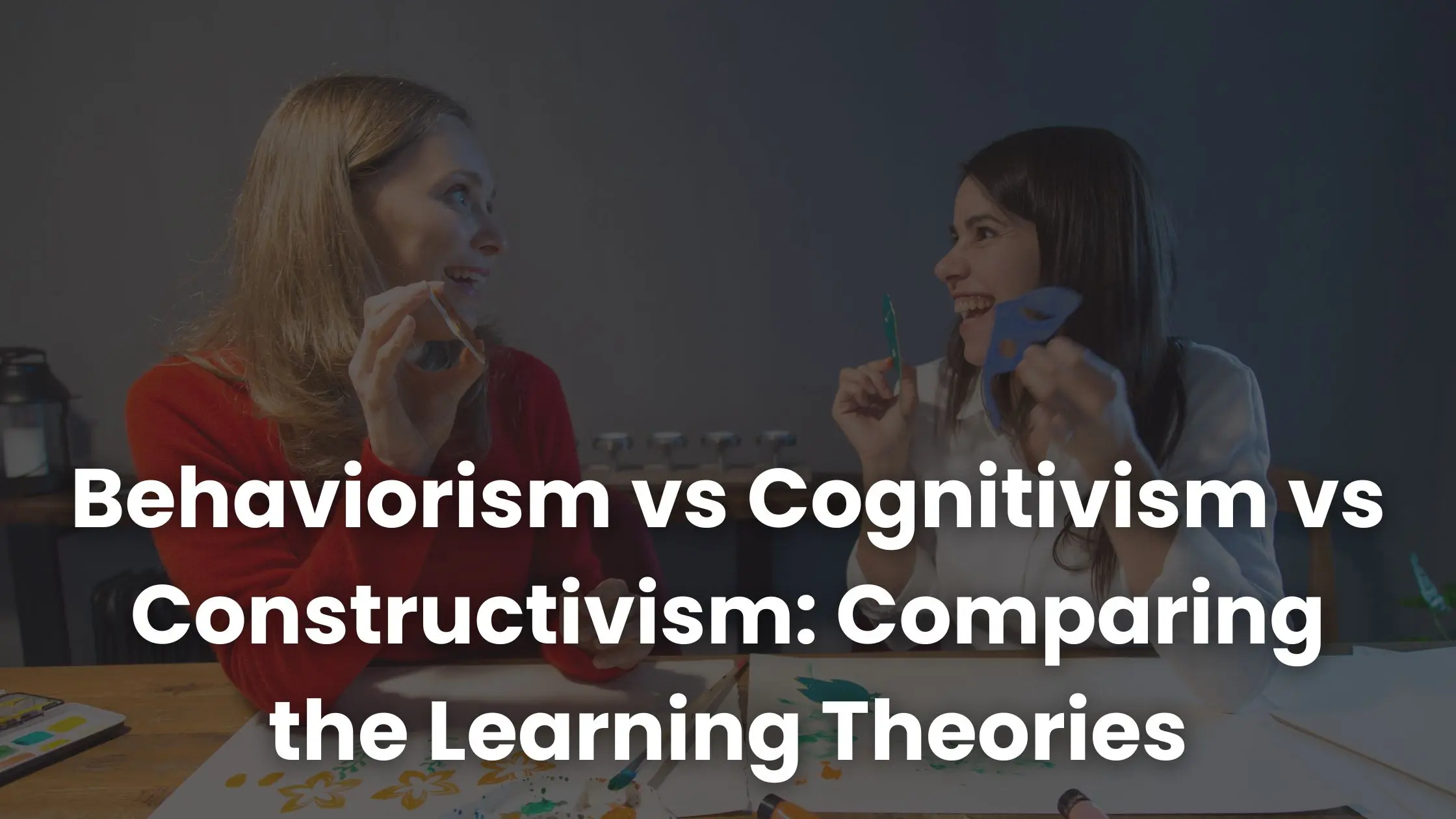
Understanding how people learn is key to developing effective learning courses. As an instructor, you probably already know that. Every individual is different with distinctive learning capabilities and cognitive potential, which leaves no room for a one-size-fits-all approach.
That’s where understanding the three foundational learning theories—behaviorism, cognitivism, and constructivism—becomes helpful. These theories set the perfect ground for understanding the ways in which learners acquire, process, and retain knowledge.
While each theory offers unique insights into the learning process, they also highlight different approaches to teaching and learning. Let’s explore them in this detailed behaviorism vs cognitivism vs constructivism comparison, and learn how they shape practical course design.
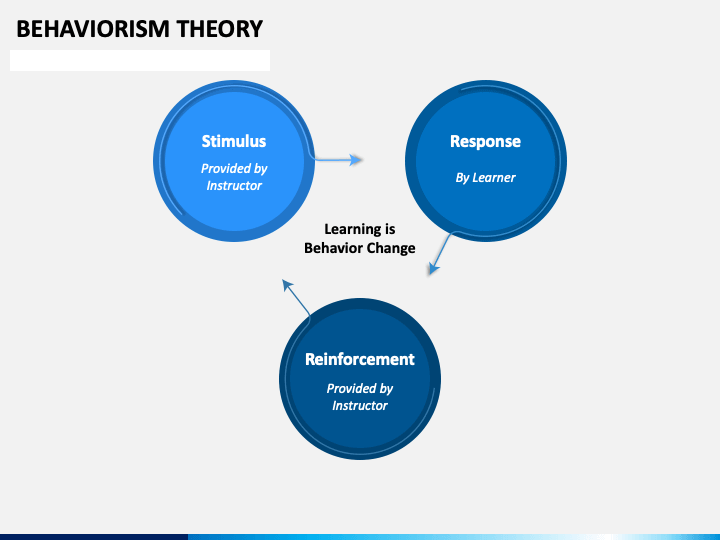
Behaviorism views learning as a change in observable behavior caused by external stimuli. Advanced by B.F. Skinner and John Watson, this theory focuses on reinforcement strategies, where behaviors followed by positive outcomes are strengthened, and those followed by negative outcomes are weakened or extinguished.
Core concepts include stimulus-response relationships, operant and classical conditioning, and reinforcement schedules. Behaviorism excels in situations that require measurable results and skill acquisition through repetition and practice. For example, learning a set of vocabulary words or mastering a procedure.
However, critics argue that it neglects internal mental processes, such as thinking and understanding. This makes the process feel somewhat mechanical or superficial, particularly for complex learning.
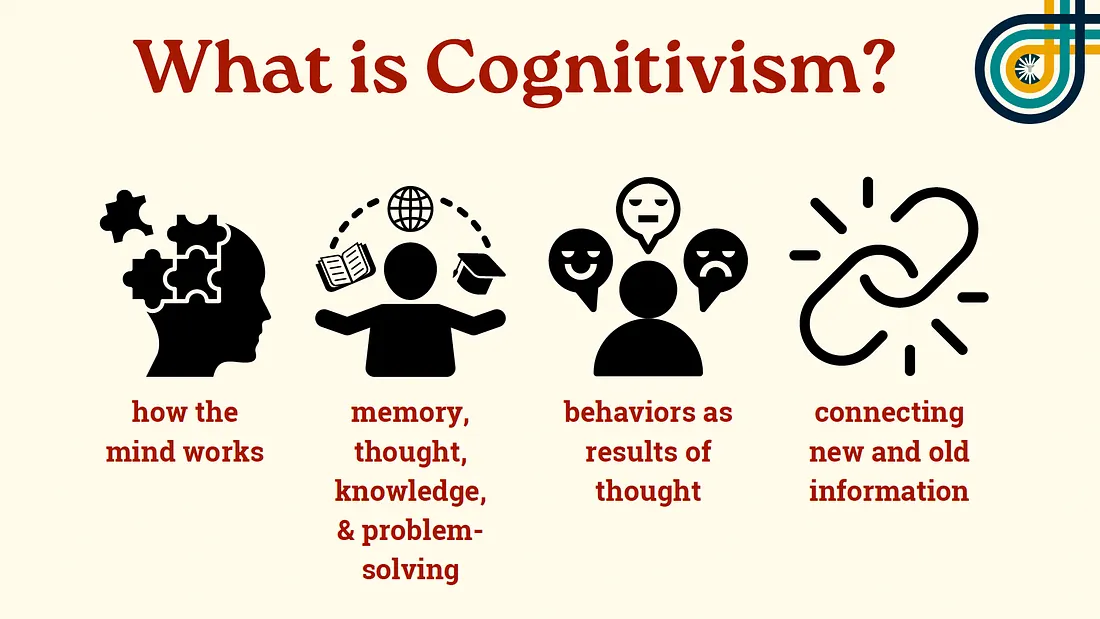
Cognitivism is a response to behaviorism’s limitations. It emphasizes the importance of internal cognitive processes, such as thinking, memory, and problem-solving. Influenced by Jean Piaget and Jerome Bruner, cognitivism views learners as active processors of information who use schemas to organize knowledge.
Key concepts include information processing, cognitive load, schema theory, and metacognition. Unlike behaviorism, this theory focuses on how learners understand and interpret information rather than just how they respond to stimuli.
Cognitivism supports instructional strategies that promote meaningful learning, such as chunking content, concept mapping, and encouraging reflection. While cognitivism enhances deep learning, its application to varied cognitive levels can be complex, and it tends to pay less attention to social learning contexts.

Constructivism takes a learner-centered perspective, positing that individuals actively construct knowledge through experience, reflection, and social interaction. Theorists like Lev Vygotsky and John Dewey stressed the importance of context, collaboration, and learner autonomy.
Constructivism emphasizes authentic learning experiences, scaffolding, and the zone of proximal development (the space where learning occurs with guidance). It encourages learners to engage in explorations, discussions, and projects to make sense of information.
This approach promotes creativity, critical thinking, and deeper understanding by situating learning in real-world contexts.
Behaviorism, cognitivism, and constructivism share the same goal of promoting learning. Yet, they differ philosophically. Behaviorism targets observable behavior changes, cognitivism emphasizes mental processes, and constructivism focuses on knowledge construction and context.

Before we dive into a detailed discussion, here is a quick overview of behaviorism vs cognitivism vs constructivism theories:
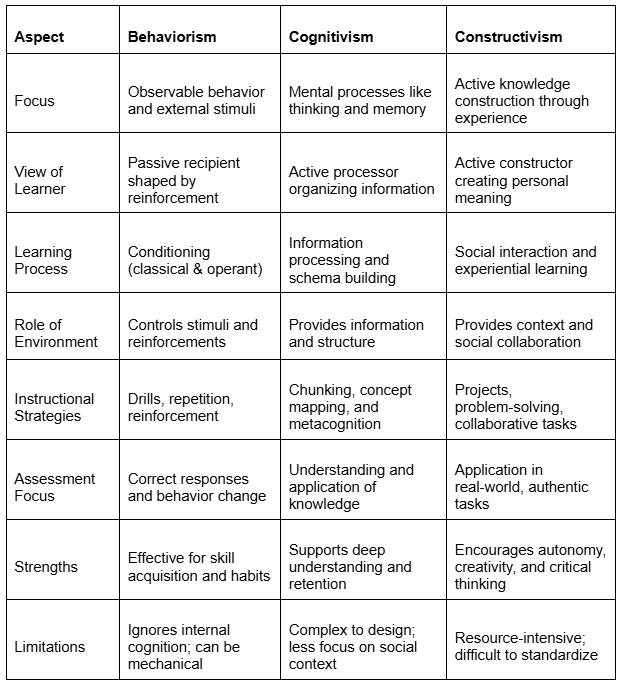
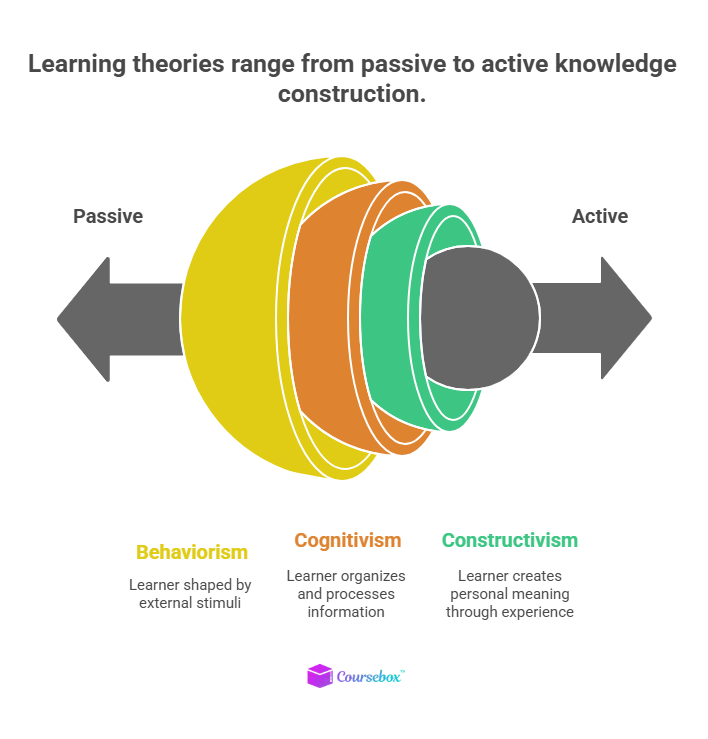
Behaviorism centers on observable behavior shaped by external stimuli. Learners are often viewed as passive responders who change their behavior in response to reinforcement and punishment.
In contrast, cognitivism highlights internal mental functions: how learners think, remember, and solve problems. Learners are active organizers of information, building complex mental models.
Constructivism pushes cognitive theory further. It emphasizes that learners actively construct knowledge themselves through experiences and social interactions, making learning deeply personal and contextual.
Behaviorists focus on conditioning processes. It relies on controlled stimulus-response cycles, in which the environment is manipulated to provoke desired behaviors through reinforcement.
Cognitivists see the environment as a source of structured information that learners process, organize, and connect to existing knowledge schemas. Constructivists view the environment as a rich context for exploration and social negotiation. Learning happens through collaboration, reflection, and authentic experience rather than direct instruction alone.
Behaviorism stresses repetition, practice, and reinforcement techniques like drills, quizzes, and reward systems to shape behavior. Cognitivism favors instructional strategies that reduce cognitive load, such as chunking content, using advanced organizers and concept maps, and promoting metacognitive strategies like self-monitoring.
Constructivists design learning tasks that immerse learners in problem-solving projects, encourage collaboration, and foster discovery-based learning.
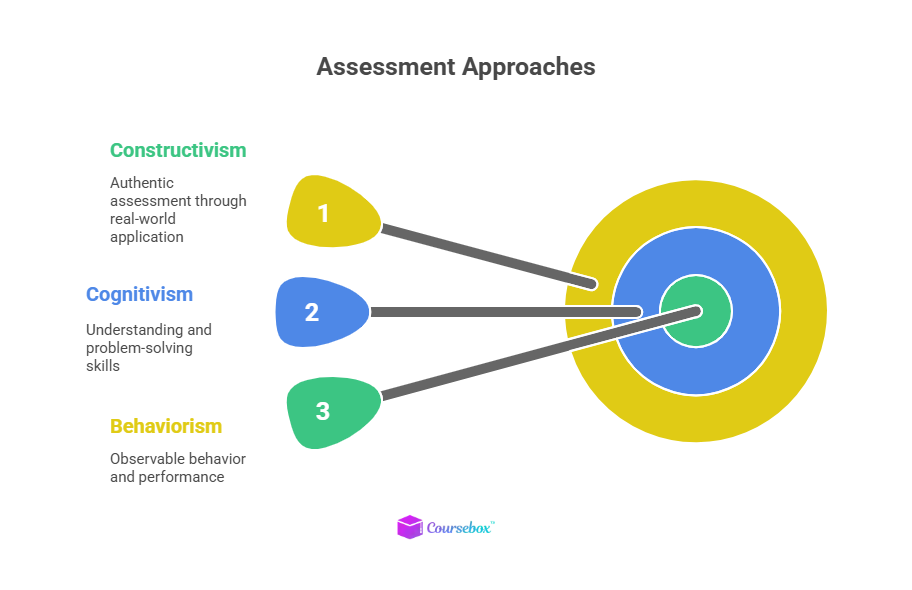
In behaviorism, assessments measure observable behavior: correct responses or performance changes. Cognitivism evaluates learners’ understanding, ability to apply concepts, and problem-solving skills through quizzes, reflections, or applied tasks.
On the other hand, constructivism values authentic assessment through real-world application, portfolios, peer assessments, and self-reflection. It focuses on how learners use knowledge creatively and contextually.
The best part about this behaviorism vs cognitivism vs constructivism is that each theory shines under different conditions.
Behaviorism builds foundational skills and habits but may overlook mental complexity. Meanwhile, cognitivism supports meaningful learning and deeper retention, but can be challenging to translate into instructional design for complex cognitive skills. Constructivism encourages learner autonomy and critical thinking but often requires more time, resources, and flexible assessments, which makes standardized evaluation difficult.
As a trainer provider, understanding these similarities and differences can help you select or blend approaches tailored to your learners’ needs, content, and context. Each theory offers valuable insights that can complement one another for richer, more effective learning experiences.
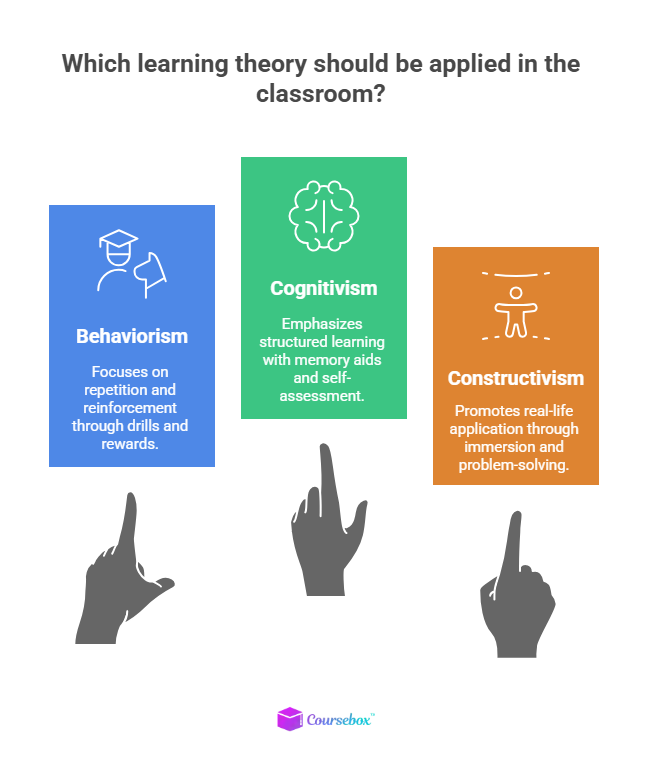
To better understand how you can apply each learning theory to your course design, let’s imagine an online beginner Spanish course.
In this case, behaviorism will encourage learners to practice vocabulary and pronunciation repeatedly. This might look like learners drilling Spanish phrases and answering quizzes where they receive instant feedback, such as points or positive encouragement. These constant repetitions and reinforcements help learners remember the language basics effectively.
Cognitive learning theory, on the other hand, guides how the course organizes content to make it easier for learners to absorb and remember. For example, vocabulary might be grouped into meaningful categories like food, travel, or greetings, helping learners connect new words to those they already know. Tools like flashcards or memory tricks further help in retention, and self-assessment quizzes encourage learners to reflect on their understanding.
Finally, constructivism takes a more hands-on approach by encouraging learners to engage in conversations and role-play real-life scenarios. It also motivates them to immerse themselves in Spanish culture through videos and music.
Under constructivism, learners actively practice using the language in social settings, learning from experience and interactions with others. They may also solve problems or figure out grammar rules through guided discovery, making the learning process more interactive and meaningful.
Together, these three approaches create a comprehensive course that helps learners memorize, understand, and apply concepts confidently in real-life situations.
Understanding behaviorism vs cognitivism vs constructivism provides valuable insights into how people learn and how to design effective courses. While each theory offers distinct perspectives, you can create the best learning experiences by blending elements of all three.
Coursebox’s AI-powered platform is built to accommodate diverse instructional philosophies. It helps training providers easily create courses that reflect behaviorist, cognitivist, or constructivist principles.
The platform’s AI assists in structuring courses with clear objectives and sequences aligned to learning goals. For instance, automated quiz and practice generation cater to behaviorist reinforcement strategies. Content chunking and sequencing support cognitivist approaches by reducing cognitive overload. Interactive tools like flashcards, social discussion boards, and real-time AI chatbot help enable constructivist methods by promoting active learner engagement and collaboration.

Coursebox’s flexible, scalable system empowers trainers to design learner-centric courses that maximize impact. Sign up for free now to get started!
Behaviorism focuses on observable behavior changes driven by external stimuli and reinforcement, emphasizing drills, repetition, and measurable outcomes. Cognitivism focuses on internal mental processes, such as thinking, memory, and problem-solving, to encourage meaningful learning and understanding through structured content. Constructivism goes further by viewing learners as active constructors of knowledge through experience and social interaction, promoting collaboration and context-rich learning.
Absolutely. While behaviorism, cognitivism, and constructivism have distinct philosophical roots, blending their strategies often yields the best results. For example, behaviorist techniques like quizzes can build foundational skills, cognitivist methods help learners connect ideas, and constructivist activities foster application and creativity. This creates a well-rounded learning experience.
Knowing these theories helps trainers select appropriate instructional strategies based on content and learner needs. It enables thoughtful design choices to engage learners effectively, facilitate retention, encourage higher-order thinking, and foster skill application. This leads to training that is not only engaging but also efficient and impactful.
Coursebox’s AI-powered platform allows course creators to design courses that align with all three theories. It automates quiz creation, supporting behaviorist reinforcement, sequences content smartly to manage cognitive load in line with cognitivist principles, and offers interactive elements and social features that foster constructivist learning. The real-time AI chatbot provides continuous learner support, making learning personalized and engaging.
